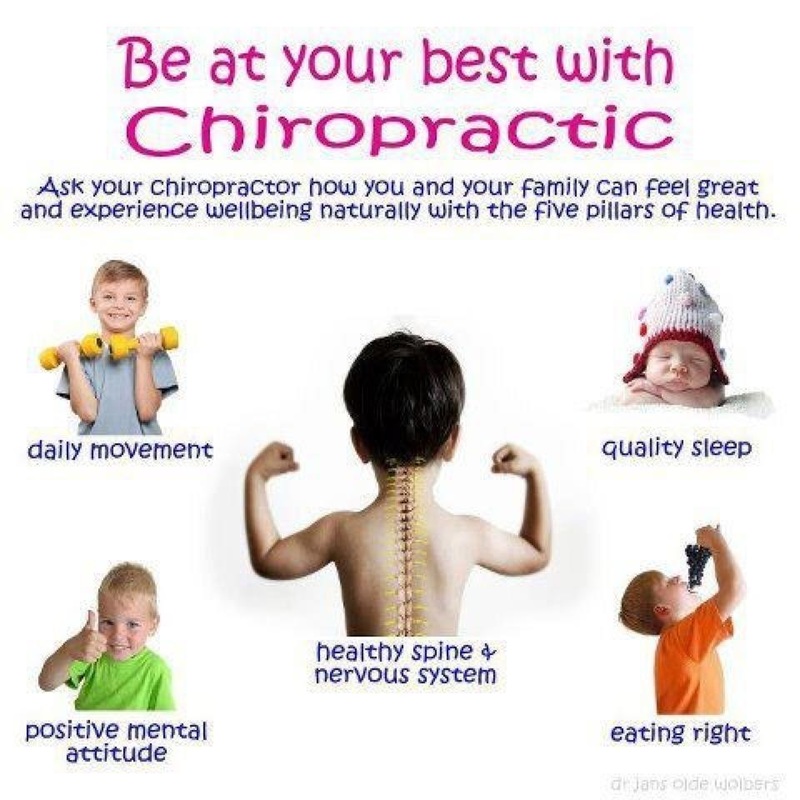 Michael Melton January 3, 2016 Chiropractic News Add our library of videos to your site: Chiropractic Video Service Countless studies have demonstrated that chiropractic care is a safe and effective way to treat musculoskeletal complaints like back pain, neck pain, or sciatica. Now a new study from Switzerland has looked at the relative benefits of chiropractic compared to medical care for the most common types of pain issues. In this study, the authors examined data from people who reported spinal, hip, or shoulder pain. 403 patients saw a medical doctor for relief; 316 people saw a chiropractor. Four months after treatment, the patients were asked to fill out a survey reporting on their recovery. The authors found that:
“The findings of this study support first-contact care provided by DCs as an alternative to first-contact care provided by MDs for a select number of musculoskeletal conditions. Restrictive models of care in which patients are required to contact a medical provider before consulting a chiropractic provider may be counterproductive for patients experiencing the musculoskeletal conditions investigated and possibly others. In addition to potentially reducing health care costs, direct access to chiropractic care may ease the workload on MDs, particularly in areas with poor medical coverage and hence enabling them to focus on complex cases. The minority of patients with complex health problems initially consulting a chiropractic provider would be referred to, or comanaged with, a medical provider to provide optimal care.” Houweling TAW, Braga AV, Hausheer T, et al. First-Contact Care With a Medical vs Chiropractic Provider After Consultation With a Swiss Telemedicine Provider: Comparison of Outcomes, Patient Satisfaction, and Health Care Costs in Spinal, Hip, and Shoulder Pain Patients. Journal of Manipulative and Physiological Therapeutics 2015;38(7):477-83. Written by: Michael Melton on January 3, 2016.on January 6, 2016. About Author Michael MeltonAs the CEO of ChiroHosting.com, Michael Melton strives to spread awareness about chiropractic health and wellness. Since starting his career working with chiropractors in 1993, Michael has published several educational DVDs, presentations, and books on whiplash-associated disorders, such as The Complete Guide to Whiplash. His educational materials are routinely used by chiropractors, massage therapists, and attorneys across the country. As a contributor to ChiroNexus.net, Michael reports on a broad range of news topics related to chiropractic care from nutrition to fibromyalgia.
1 Comment
It's January and the cold, wet weather, otherwise known as cold and flu season, has officially arrived. Watch this video to learn natural ways to prevent feeling "under the weather" this winter. Information:Mark Blumenthal is the founder and director of the American Botanical Council. He discusses some natural steps you can take to help protect yourself and boost your immunity during what it typically known as cold and flu season.
Is your New Year's Resolution to start living a healthier lifestyle? Juicing is an easy and delicious way to improve your diet and get the most nutrients out of the fruits and vegetables you eat. Whether you get repeated headaches or suffer from the occasional one, try these healthy alternatives to popping an Ibuprofen.
Click here to read the entire article  Chiropractic is a health care system that holds that the structure of the body, particularly the spine, affects the function of every part of the body. Chiropractors try to correct the body’s alignment to relieve pain and improve function and to help the body heal itself. While the mainstay of chiropractic is spinal manipulation, chiropractic care now includes a wide variety of other treatments, including manual or manipulative therapies, postural and exercise education, ergonomic training (how to walk, sit, and stand to limit back strain), nutritional consultation, and even ultrasound and laser therapies. In addition, chiropractors today often work in conjunction with primary care doctors, pain experts, and surgeons to treat patients with pain. Most research on chiropractic has focused on spinal manipulation for back pain. Chiropractic treatment for many other problems—including other musculoskeletal pain, headaches, asthma, carpal tunnel syndrome, and fibromyalgia—has also been studied. A recent review concluded that chiropractic spinal manipulation may be helpful for back pain, migraine, neck pain, and whiplash. There have been reports of serious complications, including stroke, following spinal manipulation of the neck, although this is very rare and some studies suggest this may not be directly caused by the treatment. “Spinal manipulation” is a generic term used for any kind of therapeutic movement of the spine, but used more precisely it is the application of quick but strong pressure on a joint between two vertebrae of the spine. That pressure twists or rotates the joint beyond its normal range of motion and causes a sharp cracking noise. That distinctive noise is believed to be caused by the breaking of a vacuum or the release of a bubble into the synovial fluid, the clear, thick fluid that lubricates the spinal and other joints. Spinal manipulation can be done either directly by pushing on the vertebrae or indirectly by twisting the neck or upper part of the body. It should be done to only one spinal joint at a time. Chiropractors and other practitioners accomplish this by positioning the body so the force they exert is focused on one joint while parts of the spine above and below it are held very still. Most spinal manipulation treatments take somewhere between 10 and 20 minutes and are scheduled two or three times a week initially. Look for improvements in your symptoms after a couple of weeks. In addition, a chiropractor may advise you about changing your biomechanics and posture and suggest other treatments and techniques. The ultimate goal of chiropractic is to help relieve pain and help patients better manage their condition at home.  By: Amy Cuddy, NY Times THERE are plenty of reasons to put our cellphones down now and then, not least the fact that incessantly checking them takes us out of the present moment and disrupts family dinners around the globe. But here’s one you might not have considered: Smartphones are ruining our posture. And bad posture doesn’t just mean a stiff neck. It can hurt us in insidious psychological ways. If you’re in a public place, look around: How many people are hunching over a phone? Technology is transforming how we hold ourselves, contorting our bodies into what the New Zealand physiotherapist Steve August calls the iHunch. I’ve also heard people call it text neck, and in my work I sometimes refer to it as iPosture. The average head weighs about 10 to 12 pounds. When we bend our necks forward 60 degrees, as we do to use our phones, the effective stress on our neck increases to 60 pounds — the weight of about five gallons of paint. When Mr. August started treating patients more than 30 years ago, he says he saw plenty of “dowagers’ humps, where the upper back had frozen into a forward curve, in grandmothers and great-grandmothers.” Now he says he’s seeing the same stoop in teenagers. When we’re sad, we slouch. We also slouch when we feel scared or powerless. Studies have shown that people with clinical depression adopt a posture that eerily resembles the iHunch. One, published in 2010 in the official journal of the Brazilian Psychiatric Association, found that depressed patients were more likely to stand with their necks bent forward, shoulders collapsed and arms drawn in toward the body. Posture doesn’t just reflect our emotional states; it can also cause them. In a study published in Health Psychology earlier this year, Shwetha Nair and her colleagues assigned non-depressed participants to sit in an upright or slouched posture and then had them answer a mock job-interview question, a well-established experimental stress inducer, followed by a series of questionnaires. Compared with upright sitters, the slouchers reported significantly lower self-esteem and mood, and much greater fear. Posture affected even the contents of their interview answers: Linguistic analyses revealed that slouchers were much more negative in what they had to say. The researchers concluded, “Sitting upright may be a simple behavioral strategy to help build resilience to stress.” Slouching can also affect our memory: In a study published last year in Clinical Psychology and Psychotherapy of people with clinical depression, participants were randomly assigned to sit in either a slouched or an upright position and then presented with a list of positive and negative words. When they were later asked to recall those words, the slouchers showed a negative recall bias (remembering the bad stuff more than the good stuff), while those who sat upright showed no such bias. And in a 2009 study of Japanese schoolchildren, those who were trained to sit with upright posture were more productive than their classmates in writing assignments. How else might iHunching influence our feelings and behaviors? My colleague Maarten W. Bos and I have done preliminary research on this. We randomly assigned participants to interact for five minutes with one of four electronic devices that varied in size: a smartphone, a tablet, a laptop and a desktop computer. We then looked at how long subjects would wait to ask the experimenter whether they could leave, after the study had clearly concluded. We found that the size of the device significantly affected whether subjects felt comfortable seeking out the experimenter, suggesting that the slouchy, collapsed position we take when using our phones actually makes us less assertive — less likely to stand up for ourselves when the situation calls for it. In fact, there appears to be a linear relationship between the size of your device and the extent to which it affects you: the smaller the device, the more you must contract your body to use it, and the more shrunken and inward your posture, the more submissive you are likely to become. Ironically, while many of us spend hours every day using small mobile devices to increase our productivity and efficiency, interacting with these objects, even for short periods of time, might do just the opposite, reducing our assertiveness and undermining our productivity. Despite all this, we rely on our mobile devices far too much to give them up, and that’s not going to change anytime soon. Fortunately, there are ways to fight the iHunch. Keep your head up and shoulders back when looking at your phone, even if that means holding it at eye level. You can also try stretching and massaging the two muscle groups that are involved in the iHunch — those between the shoulder blades and the ones along the sides of the neck. This helps reduce scarring and restores elasticity. Finally, the next time you reach for your phone, remember that it induces slouching, and slouching changes your mood, your memory and even your behavior. Your physical posture sculpts your psychological posture, and could be the key to a happier mood and greater self-confidence. Amy Cuddy is a professor at Harvard Business School and the author of the forthcoming book “Presence: Bringing Your Boldest Self to Your Biggest Challenges.” Follow The New York Times Opinion section on Facebook and Twitter, and sign up for theOpinion Today newsletter. A version of this op-ed appears in print on December 13, 2015, on page SR3 of the New York edition with the headline: How iPhones Ruin Your Posture and Your Mood. Today's Paper|Subscribe |







 RSS Feed
RSS Feed